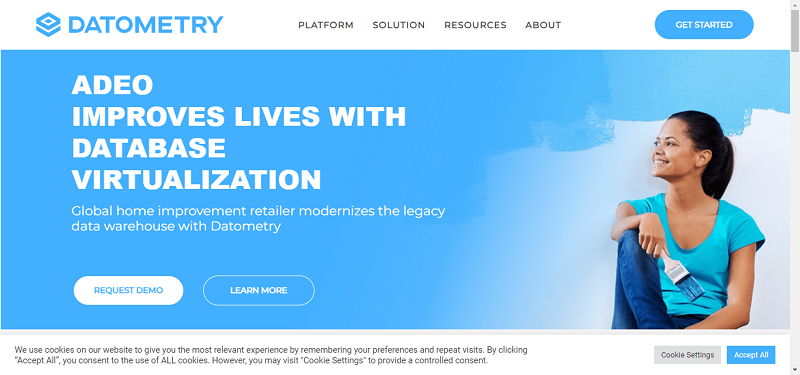Natural language processing is one subset of AI driving human-machine interactions forward. From helping with direct calls to providing robust alternatives to human workers, it holds many possibilities for customer service on both the front and back ends of the work.
As consumers increasingly use voice assistants and messaging platforms, their comfort with—and demand for—these communication options will only increase. Integrating NLP into customer service will become a business advantage both in the form of increased efficiency/reduced cost on the company’s end and by boosting customer satisfaction. Here are some of the ways NLP is shaping customer service.
The first attempt to replace humans on the other end of the phone in customer service employed interactive voice response (IVR) systems that ask callers specific questions and route them through pre-programmed paths. But what if the options presented don’t address a caller’s issue? Many people end up frustrated with these systems, and customer service suffers.
NLP affords companies a better option. Natural language understanding, closely related to NLP, makes it easier for callers to tell the system what they need in their own words, rather than requiring them to use certain phrases and speak in a stiff manner. NLP also makes it possible for the system to ask open-ended questions, understand context in replies, and respond to caller requests to repeat something or pause.
Using NLP-equipped IVR systems can shorten calls, increase the number of successful calls, and reduce contact needed with human customer service agents, leading to a significant overall boost in productivity at call centers.
An IVR with powerful NLP capabilities will be able to answer calls and give hours and directions, take orders for pickup or delivery, or make reservations. Rather than struggling to communicate over loud background noise, customers will be able to easily relay their orders to an IVR, which can send it directly to the kitchen or call a person to step in if there’s confusion.
To be successful, this kind of technology will need strong natural language understanding as well as processing functionality. Callers may be reading from a menu or using shorthand, and different dialects can be hard to understand.
Many companies are developing their own chatbots for customer service applications. While simple chatbots use hard-coded programming to provide options and cannot operate outside these parameters, chatbots are increasingly built using NLP. With this technology, chatbots can interpret human inputs and respond accordingly, providing a conversational experience.
Chatbots can replace live chat functions on websites and are available all the time, not just during business hours. A chatbot can answer many questions if a company’s resources are robust enough—it’s often a simple matter of finding the right page on a site. Chatbots can also provide an instantaneous response to customer complaints so that even if it takes a human agent to address the issue, the customer feels they’re being heard.
As NLP improves, chatbots will be able to handle increasingly complex consumer communications, shifting weight off customer service agents. What’s more, advances in NLP will make personalization possible. Chatbots will be able to remember past conversations with users to customize questions, responses, and options.
Natural language processing tech can analyze incoming support tickets before a live agent even sees them. By doing so, tickets can be prioritized, routed to the right representatives, and even sent to automated systems (such as a chatbot) if the request is simple enough. By reducing the number of eyes on each support ticket, companies will save significant time.
NLP can also be used to support customer service agents in accessing information during calls. Sometimes called agent assist, this technology will integrate with CRMs and internal databases to help staff answer questions accurately and quickly. ServiceNow recently announced the development of a platform designed, among other things, to help service workers prioritize tasks and find the information they need in their companies’ various knowledge bases.
Expediting the process of providing live customer support will not only make for happier customers, but happier employees, too.
One of the most powerful uses of NLP for customer service is on the back end: data analysis. Phone calls provide vast amounts of data that could be useful to companies, if only they had a way to sort and contextualize it. NLP provides that.
Sentiment analysis, for example, can allow companies to match the emotional content of calls or other customer communications with actions they take or related entities (products or services of the company). NLP can also be used to glean themes and categories from communications so businesses can learn more about what customers are talking about, where the gaps are in their offerings or resources, and how they can address concerns.
Overall, NLP will help companies extract business insights from all types of consumer communications to provide better customer service support as well as analyzing other business areas by uncovering trends, patterns, and relevant information.
Consider an airline that has recently opened new routes. It will want to determine whether customer satisfaction on these routes is better, worse, or as good as its other routes. To do so, the company can use NLP to mine call recordings and social media mentions for sentiment—complaints or praise—and related features of the experience. The airline can use this data to adjust their service and marketing.
NLP is about better customer experience as much as it is a more efficient service. Research by Zendesk found that customer service has a significant impact on how consumers interact with the brand; for Instance, 42% of B2C customers purchased more after a good customer service experience and 52% of B2C customers stopped buying after a bad customer service interaction. It’s always been true that the better a company understands what its customers are saying, the better service it can provide; that definition is now expanding to include technological understanding.
By Hilary Thompson





